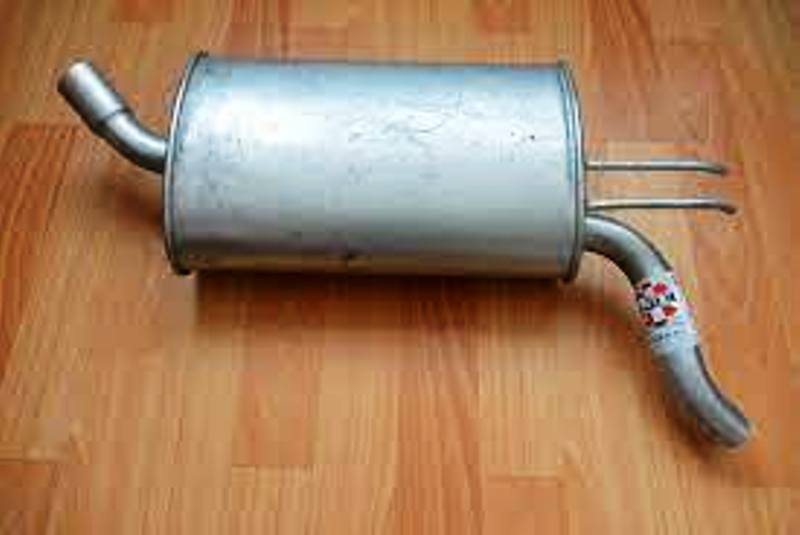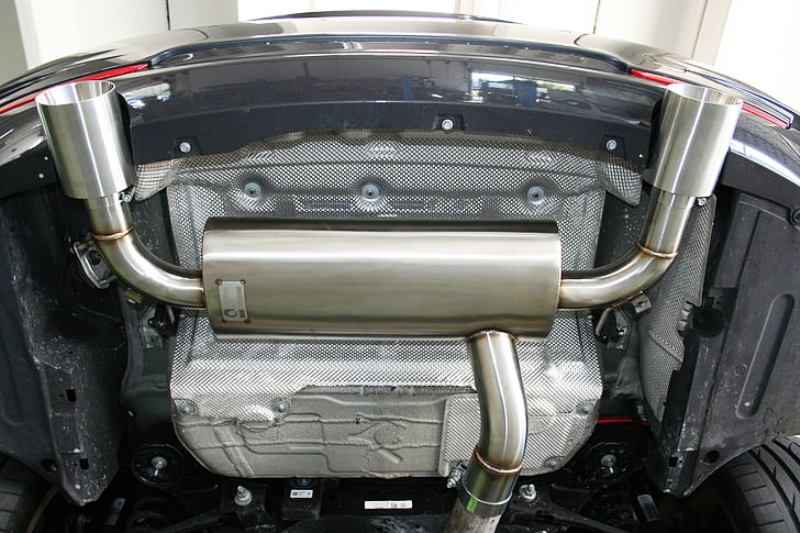Contents
– Characteristics and operation of an exhaust silencer
– Defective exhaust silencers: symptoms, diagnosis and causes
– When to change an exhaust silencer
– Price of an exhaust silencer
The exhaust silencer is designed to reduce the exhaust noise of heat engine gases. However, a defect in the silencer can also have consequences for other components. Here’s a look at this automotive part that plays a role in the smooth running of your vehicle
Characteristics and operation of an exhaust silencer
The exhaust silencer is made up of three parts that are connected by adapters.
The front part: the catalytic converter
Its function is to reduce polluting emissions such as carbon oxides, nitrogen oxides and carbon monoxide. The catalyst consists of a honeycomb element formed by a porous ceramic core surrounded by a precious metal (platinum or a mixture of platinum and rhodium).
The catalyst converts the polluting gases into non-toxic components; water, carbon dioxide and nitrogen.
The central or intermediate element
This contains a perforated tube called a “gun tube”. This tube is usually covered with rock wool which provides sound insulation. It carries the gases through several baffles, which limits the speed of the sound produced by their exhaust.
The rear element
The exhaust system, consisting of an exhaust chamber, a pipe and an outlet, is used to discharge the gases to the outside via the exhaust outlet.
Good to know: some city cars do not always have an intermediate silencer.
Defective exhaust silencer: symptoms, diagnosis and causes

An exhaust silencer wears out quickly if the vehicle is frequently driven for less than 10 minutes. This is because the exhaust line does not heat up sufficiently for the water to evaporate, which leads to a build-up of moisture in the exhaust line, leading to corrosion of the silencer.
A defective catalyst or muffler can damage the rear muffler.
Indications of a poor exhaust system are
– high fuel consumption;
– abnormal noise when accelerating: the engine backfires;
– a clattering sound at floor level, which suggests that the baffles are loose.
As soon as any of these symptoms appear, there are telltale signs that indicate a defective muffler. You can do this by getting under the vehicle or using a lift in several ways:
– View the entire exhaust system for rust;
– check the condition of the rubber pads that support the silencer;
– shake the catalyst to check that the rock wool has not disintegrated: if you hear a noise, the catalyst is broken.
Good to know: in case of doubt, it is strongly recommended to call in a car mechanic to identify the fault.
When should an exhaust silencer be changed?
It would help replace the exhaust silencer as soon as you notice an abnormal noise in the exhaust line when exhausting gases. This will also help to avoid noise pollution and reduce fuel consumption.
Price of an exhaust silencer
It may not be necessary to replace the entire exhaust system; you may replace only the defective part, the catalytic converter, the centre silencer or the rear silencer.
The price of the centre parts and the rear silencer is generally between $80 and $150, depending on the type and model of the vehicle.
The catalytic converter price ranges from $150 to $400, although the price may have changed since covid-19.
Please note: the cost of labour is, of course, in addition to the cost of the part to be replaced.
Hope you have liked this post. Remember to share and comment below.
Read more:

